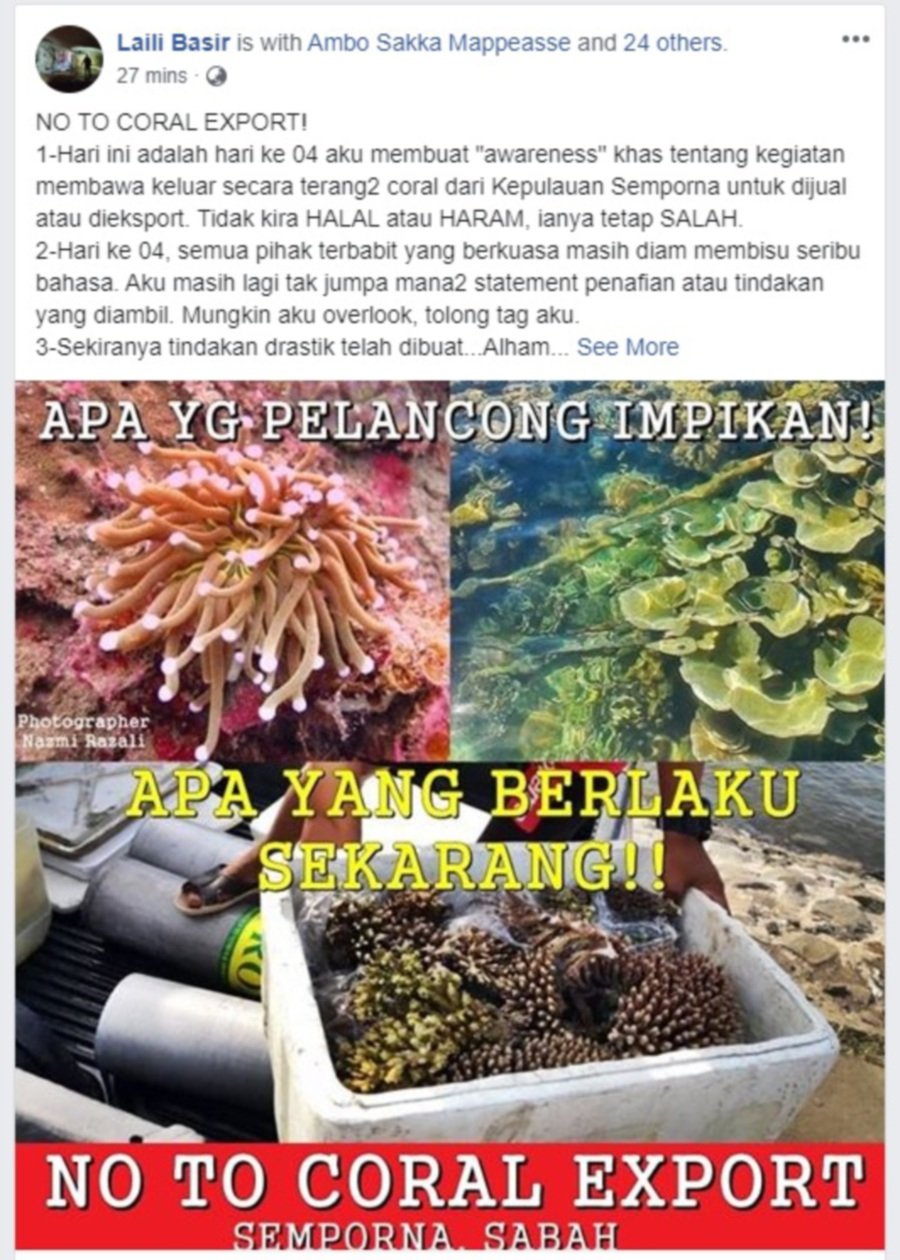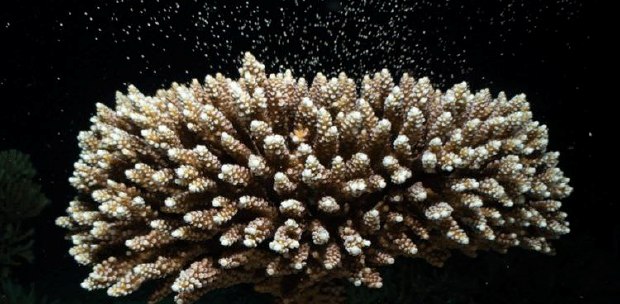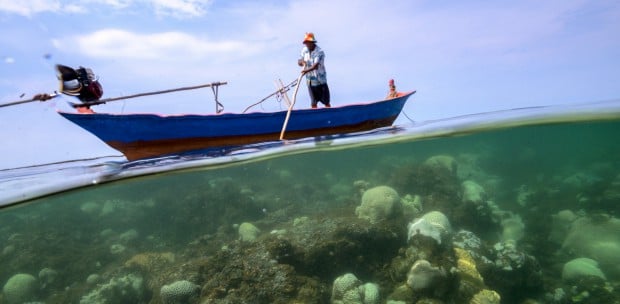KOTA KINABALU: Disruption of marine ecosystems following massive damage to coral reefs in Kalampunian Island, off Kudat, will result in turtles there migrating elsewhere.
Kudat Turtle Conservation Association chairman Sofia Johari said if this happened, the Kalampunian waters would have less turtle population, affecting one of the tourist attractions in the coastal district.
“The destruction of coral reefs will affect the turtle’s food source and their hiding or resting place. The affected area is a tourist location for scuba diving and snorkelling activities.
“The surrounding area is also a fishing ground for local fishermen. If the reefs are damaged, there will be less marine life. The tourism activity and livelihood of the people will surely be affected,” she said.
On Sept 8, a Sarawak-registered cargo vessel was stranded on the reefs, within Tun Mustapha Marine Park, due to faulty navigational device. The vessel was heading towards Kemaman, Terengganu, from Sandakan when it was stranded.

A team of divers from Sabah Parks and WWF-Malaysia were sent to the site to conduct an evaluation dive.
Sabah Parks director Dr Jamili Naid had recently said 3,625sqm of corals were identified to have been damaged.
Deputy chief minister Datuk Christina Liew had also said the state government would ask for higher compensation from the party responsible for the damage, noting an offer made by the cargo ship owner’s agent was too small to initiate restoration works at the affected area.
On this, Sofia said the high compensation was reasonable as the coral reef restoration work was expensive and involved various quarters such as relevant governmental agencies, non-governmental organisations, tourism operators, and villagers.
“The reef restoration work is not easy as it requires continuous monitoring and takes between 10 and 15 years to completely rehabilitate,” she said.
On the turtle population data in the Kalampunian and Tun Mustapha Marine Park area, Sofia said the Borneo Marine Research Institute of Universiti Malaysia Sabah was currently conducting a research.

She said the research also covered genetic study to identify the origin of turtles in the area with assistance from the association members and villagers.
“The turtle population research will be made known next year. Based on previous studies, there are turtles originating from the Philippines that come to Sabah waters to forage for food or lay eggs.
“Our association members have stumbled upon a turtle laying eggs (at Kudat beach area) and it had a tag from the Philippines,” she said, adding that the three species found in Kudat waters were the green, hawksbill, and olive ridley turtles.





